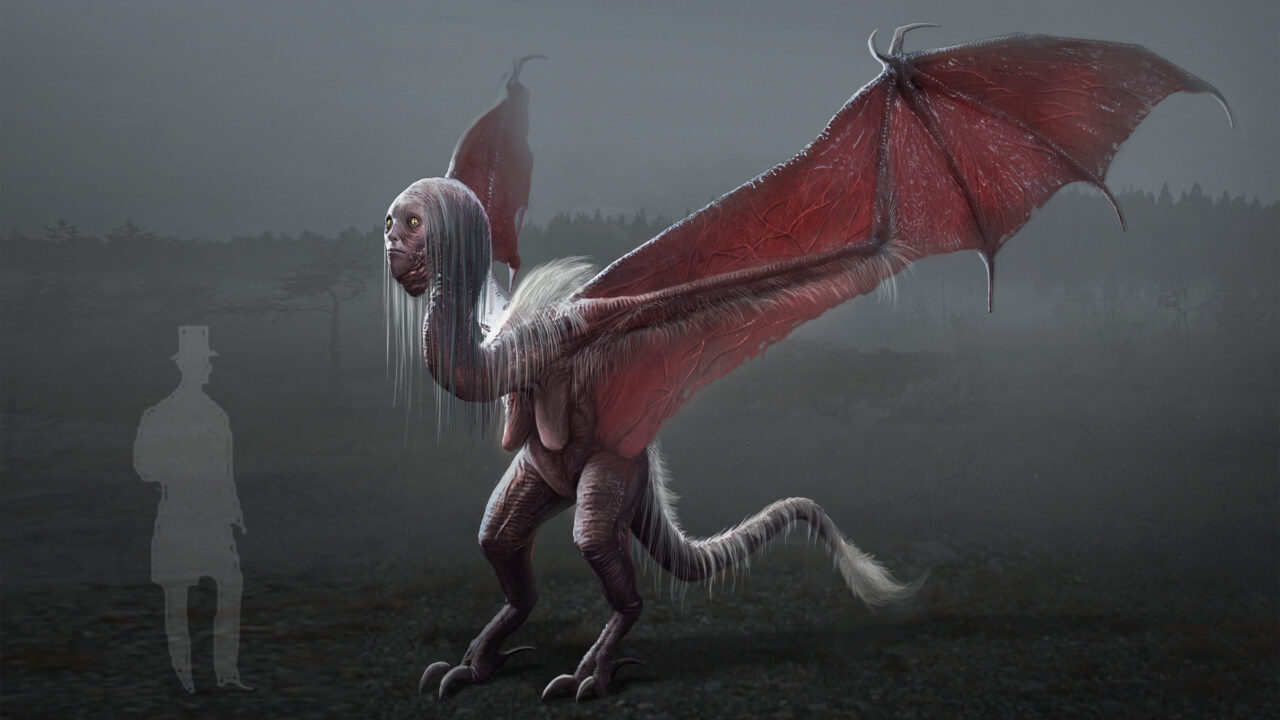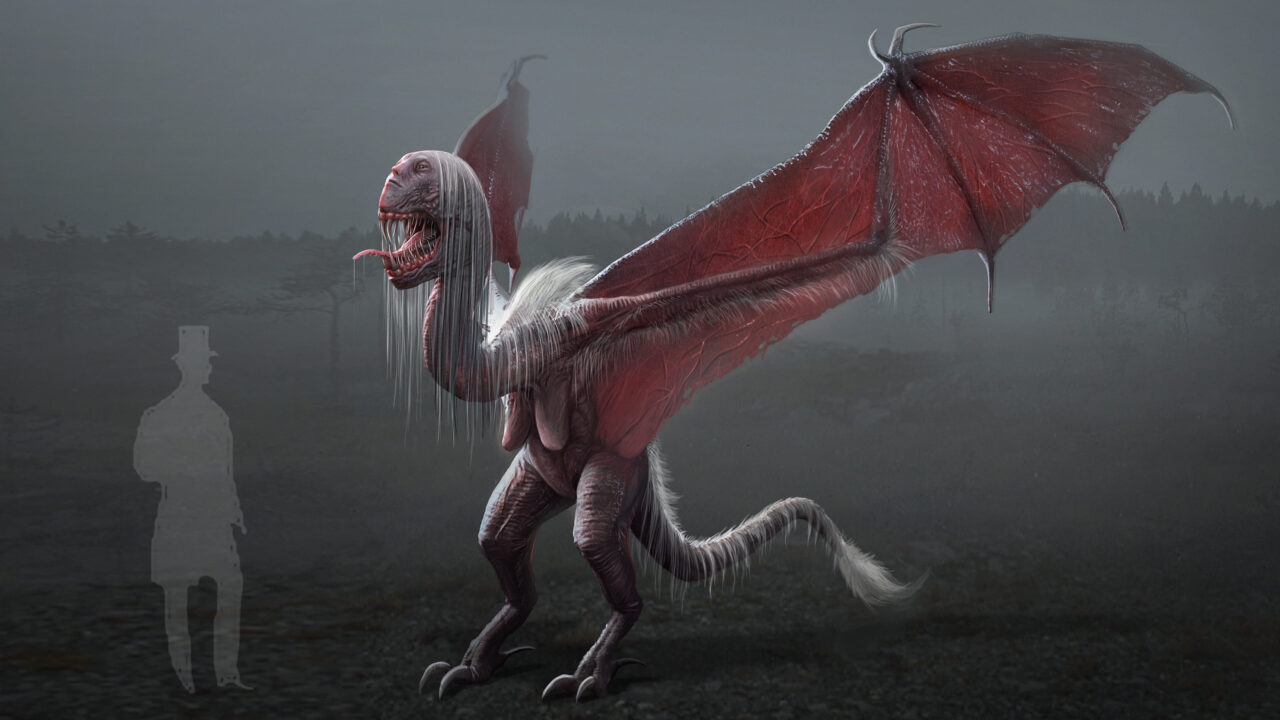Survival in the lush wilds of Nightingale means players outlasting the elements while battling its roster of mythical beasts.
To make the large fantastical creatures feel natural to the game’s various settings, studio Inflexion Games studied how they should behave in the wild, and took inspiration from European folklore to help the beasts fit into the Victorian gaslamp fantasy world.
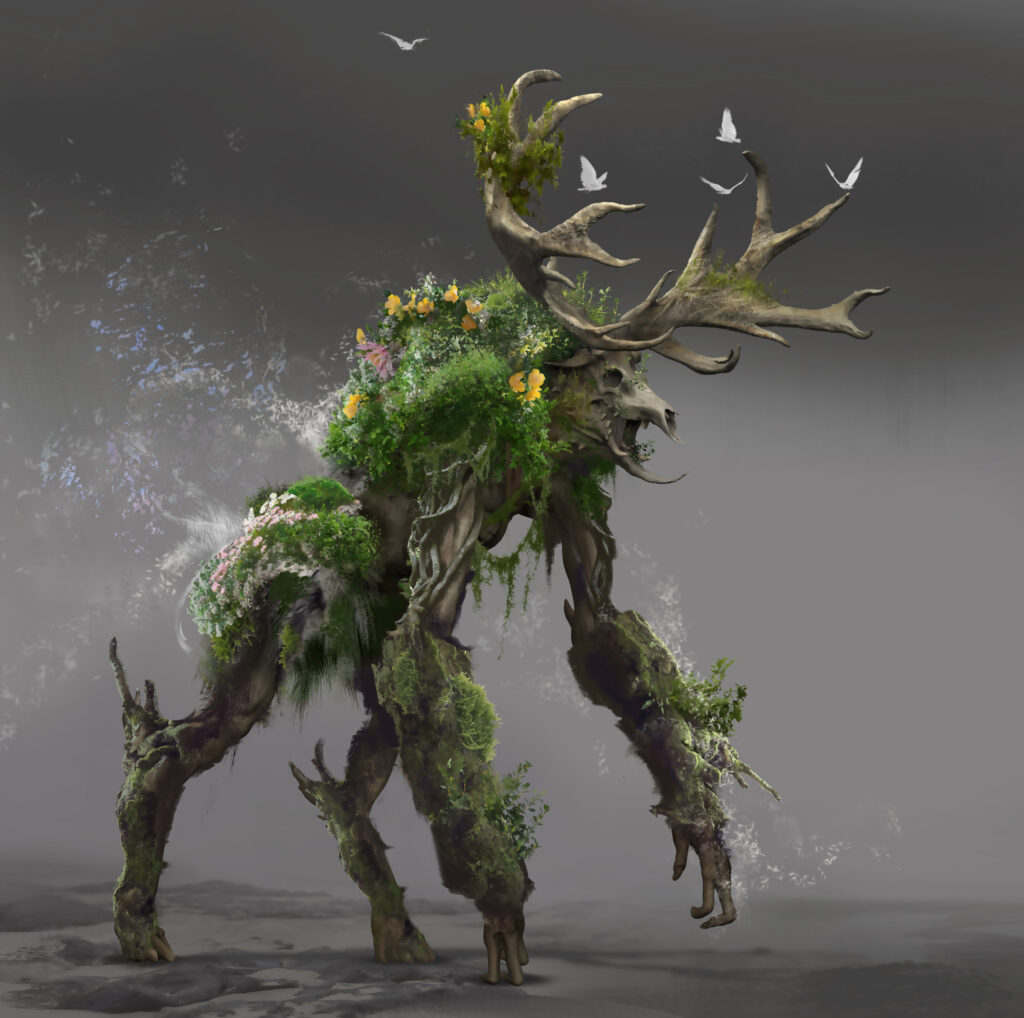
The game features different biomes, each with their own climates and local flora and fauna that players can generate with Realm Cards.
For example, the vast expanse of the Desert world stands in contrast to the water-dominated Swamp biome filled with plant fiber and rocky terrain. Venturing further into the Fae Realms, players will encounter creatures like the beautiful Everhart Deer of the forests and the deadly Selket’s Scorpion found in the desert.
The effort hasn’t been lost on the player community, which submitted these snapshots for a Discord challenge. The fan favorite Carnute, affectionately known as the “Demon Deer,” starred in the winning entries from members Layner, Wolfie and Kal.
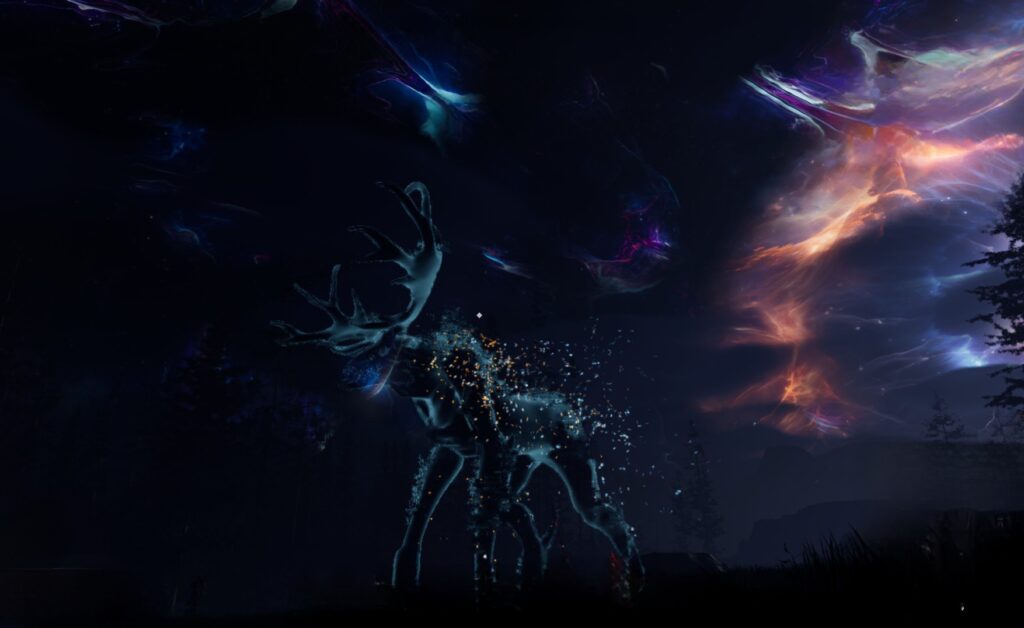
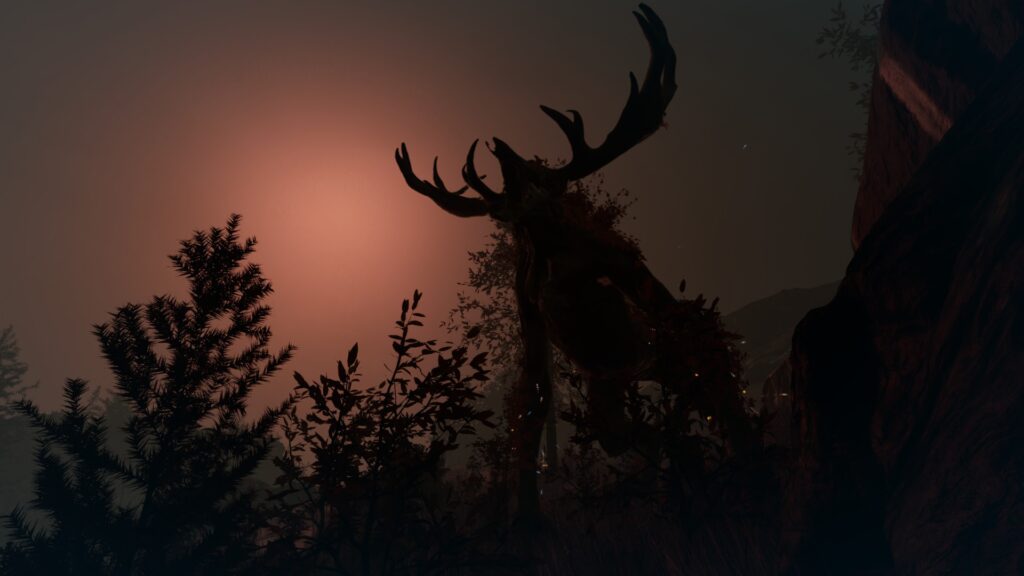
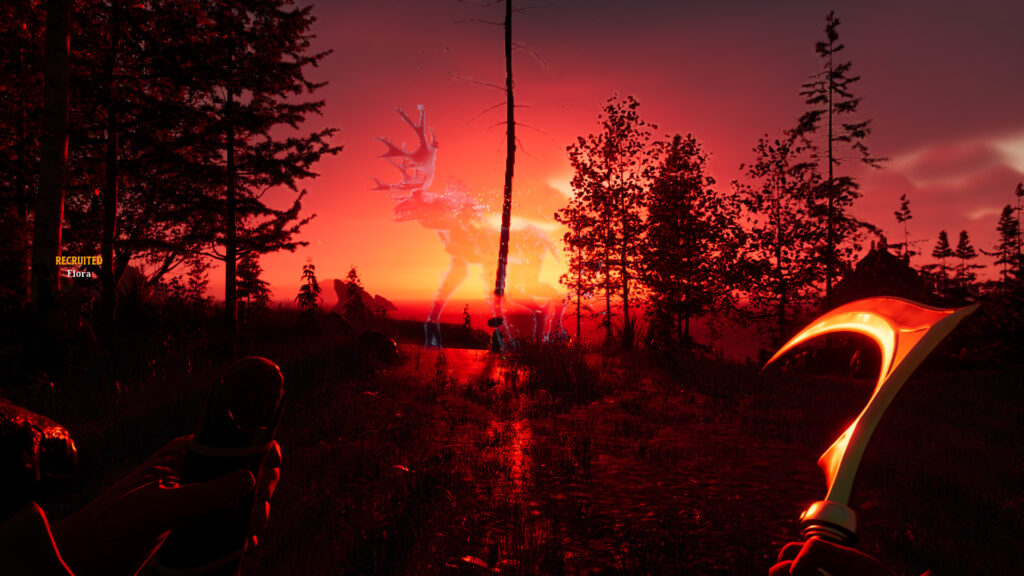
We sat down with Art Director Neil Thompson to delve into how these creatures have evolved from first concept to final form.
Where do you get your inspiration for such incredible creatures?
We wanted to lean into European folklore for some of the more unique creatures in Nightingale, avoiding more scifi-esque tropes. The Carnute is a great example of this with its antlers and ethereal state; it feels ancient.
Our Harpies share some resemblance to the creatures of classical mythology. In Nightingale they’ve adapted over millenia, evolving the ability to appear human when hunting in the swamp realms. In their passive state, with their wings wrapped around them, they can be mistaken for an old woman in a shawl… but beware!
How does the environment affect or influence their behaviour and characteristics?
We try to allow the creatures to behave in ways that suit their environment. Some creatures are more effective in water (such as the giant frogs) and Bandersnatches are able to leap across most uneven terrains. Spiders and the Bound have no such specializations and are deadly wherever encountered.
All our “believable” creatures have some fantastical elements to them to reflect the fact that none of the Realms are actually Earth
What’s the process for bringing these creatures to life – from concept to final implementation?
Generally we start by talking about what sort of encounter or behaviours we’d like to see from any given creature in an environment. Often the germ of an idea for how the creatures should look comes from these early brainstorms.
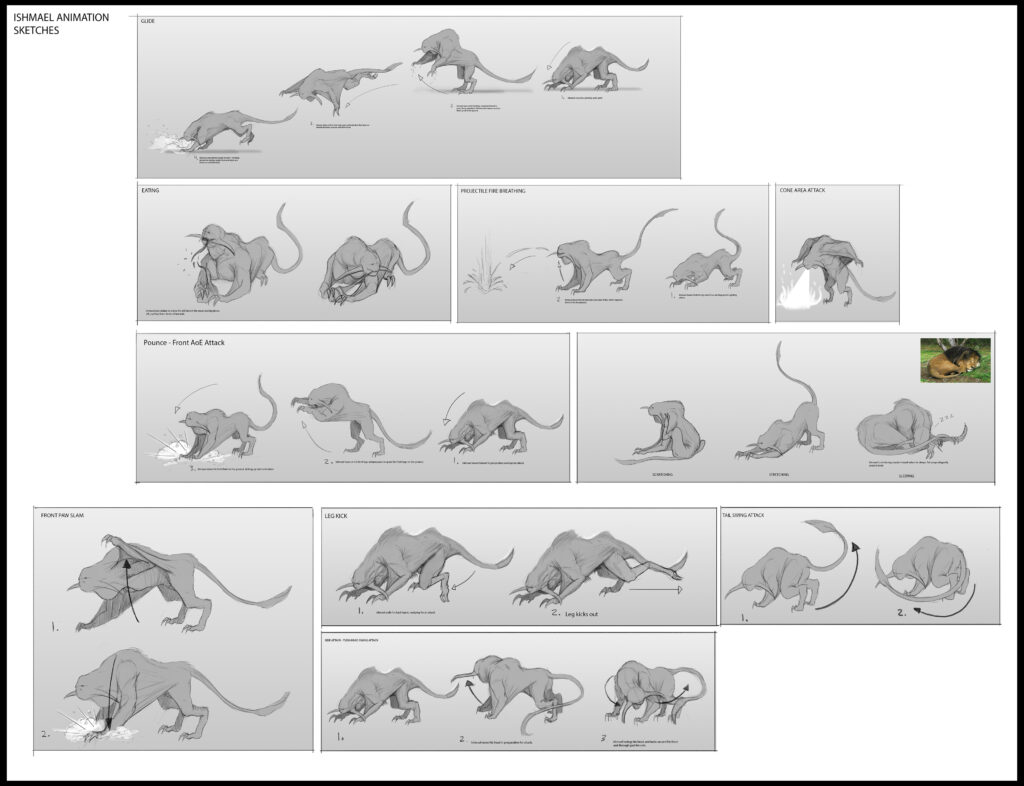
At that point concept art will start on rough sketches and then refine and iterate until we reach the final concept. After that, the character art team will build a 3D model, and the tech animators will rig the model’s armature—its skeleton, basically. Once that’s done, the animators work closely with the creature gameplay designers to bring each creature to life.
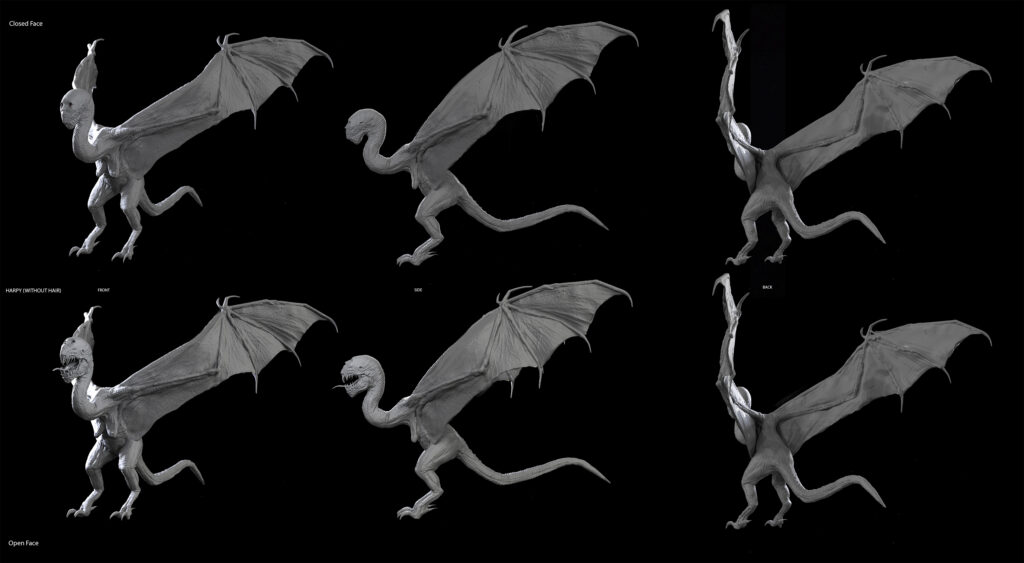
How do you strike the balance between believable/realistic creatures with the fantasy setting?
All our “believable” creatures have some fantastical elements to them to reflect the fact that none of the Realms are actually Earth. Either more exotic colourisation or extravagant horns; nothing is completely “real”.
The Carnute is often referred to as the “Demon Deer.” Do any other creatures have nicknames?
We often give our creatures nicknames before they get an “official” name. I habitually refer to the Humbaba as “Ishmael.” This was its original name, inspired by the central character from “Moby Dick” to reference the eternal struggle of Realmwalkers against apex creatures. The “Bandersnatch” was “Rabtor” for the longest time because of its resemblance to a cross between a rabbit and a Velociraptor.
To see more of the gorgeous character, creature and environment design in Nightingale firsthand, head to Steam or the Epic Games Store.
